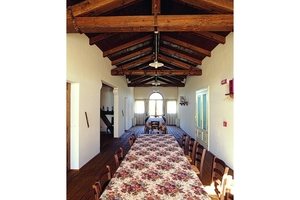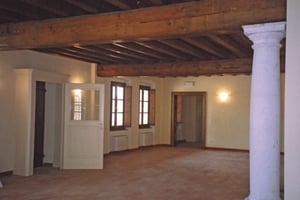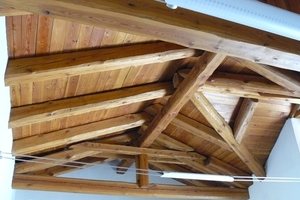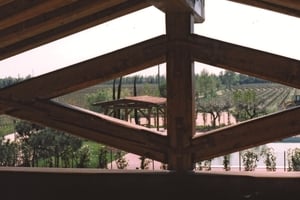
Welfare in architecture
Although aesthetics is a subjective value, wood material plays upon a number of the human senses, including touch, sight and smell. Wood can even be used to partially recreate a natural environment in urban centres and crowded cities. Wood is used for the restoration of historic buildings, as well as for modern architecture.
Wood can have a positive effect on human health and wellness. The natural porosity of wood acts as a humidity regulator in closed environments. Due to its natural structure, wood is capable of absorbing and releasing small amounts of moisture in any environment. Furthermore, since wood is not an electrostatic material, it does not pollute our environment and does not attract dust. It's a natural material that even boasts a number of advantages in terms of hygiene. Studies carried out over the past years have shown that bacteria do not survive more than 24 hours on a wooden surface, while bacterial colonies multiply much faster on synthetic surfaces in plastic. The essential oils in wood that give it its characteristic scent are beneficial to the human body. In fact, studies carried out by the Human Institute have shown that the human body, when exposed to wood, is able to relax more quickly and easily.
Rete Uso Fiume ed Uso Trieste
Via Macello, 57 (at Assoimprenditori)
I-39100 Bolzano
South Tyrol - Italy
Phone +39 0471 068 000
Fax +39 0471 068 150
www.traviuf.it
VAT No. IT01677580217
Via Macello, 57 (at Assoimprenditori)
I-39100 Bolzano
South Tyrol - Italy
Phone +39 0471 068 000
Fax +39 0471 068 150
www.traviuf.it
VAT No. IT01677580217





